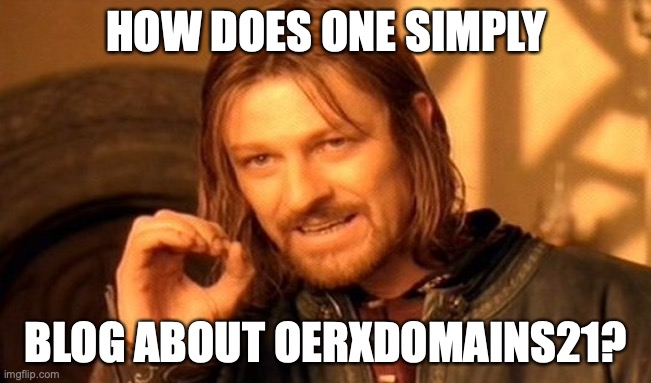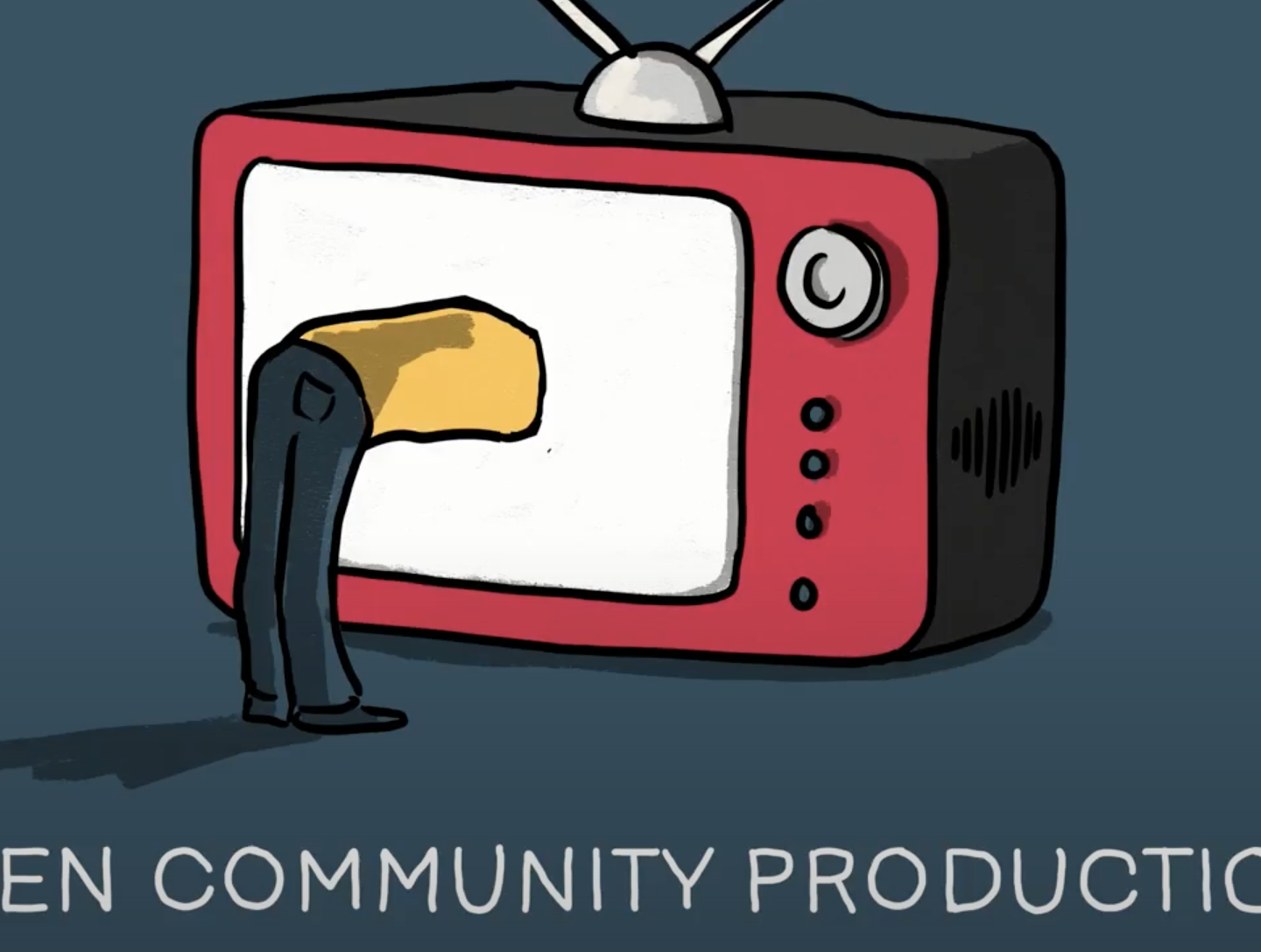OERxDomains21. Where to begin. Easily a career highlight. Hard to put into words.

I suppose I’ll start at the beginning because I do think its worth having everything documented on my little corner of the internet. That takes us back to at some point last fall, knowing that our biennial Domains event was coming around the corner. We knew that we would want to do something, but also knew that it would have to be pared down significantly compared to what we’ve done in previous years. I think the ALT team was in a similar boat regarding their annual OER conference, so after a couple of brainstorming conversations we decided to join forces and create an epic online event that catered to both communities. I’ve been an attendee and speaker at the OER conferences since 2018 (you can read my about my previous experiences here, here, and here) and have grown to look forward to it every year. It was an honor to get to work along Maren Deepwell and the rest of the of the ALT team, as well as be announced as a co-chair alongside Jim Groom, Joe Wilson, Louise Drumm, and Lou Mycroft.
So honored to be beside such an amazing group of folks, and thrilled to be apart of #OERxDomains21. 🎉 Cheers, @louisedrumm, @joecar, @LouMycroft & @jimgroom! https://t.co/bf9DbDOA3i
— Lauren Hanks (@brumface) February 8, 2021
In combining forces between OER & Domains, we knew that we wanted the themes for the event to reflect the interests and goals of both communities, while also acknowledging that 2020 was not normal. Here are the themes that were decided:
- Openness, care, and joy in the times of pandemic
- Open Education responses to surveillance technologies and data ownership in education
- Open in Action: open teaching, educational practices and resources, how you might be using Domains and other tools
- Shifts in agency and creativity as empowerment of learners and educators
- Open Source Tools: infrastructure, cloud environments, targeted teaching tools
Around the same time that we were in the early stages of planning, Tim, Jim and I spoke at DigitalOcean’s virtual Deploy conference with Kaysi Holman and Inés Vañó García at CUNY and DO’s Erin Glass. You can view our presentation here & you can read Jim’s post about it here.
The whole gang! @KaysiHolman @InesVano @erinroseglass @timmmmyboy @jimgroom @ReclaimHosting #DOdeploy https://t.co/9LDMBs6aVU pic.twitter.com/u4wphh3bta
— Lauren Hanks (@brumface) November 11, 2020
The conference and speaker experience at Deploy was super seamless, easy to watch, and required minimal effort to engage. Our session was prerecorded and branded for the event in StreamYard. StreamYard allows you to have moderators that sit behind the scenes to effectively produce videos on the fly, so all layout changes, screen-shares, and intro/outro jingles are added in real time. The sessions were then scheduled to play or “go live” at a given time, and speakers were told to be around for Q&A in Discord where all event conversation took place. This allowed speakers to engage with other participants without the added pressure of presenting live. What’s more, Discord felt casual and collaborative as a participant. In a world of zoom fatigue, the Deploy conference was refreshing, and we knew that we wanted to take pointers from it as we were thinking about delivery for OERxDomains.
“It takes a village, it takes a community of practice.” –@timmmmyboy #DOdeploy
— Lauren Hanks (@brumface) November 11, 2020
I also find it a bit poetic that ^this quote from Tim stuck out to me during our DigitalOcean Presentation, and our tagline for OERxDomains21 became Open Community Production:

(I’ll save the artwork for another post, because wow.)
Reclaim’s role in the OERxDomains21 event, beyond building content for the Domains21 track, was to think through the online delivery. Our goals/big ticket items were as follows:
- It had to work reliably. We couldn’t afford site crashes, slow loads, playback errors, etc. It had to be live and online the whole time.
- It needed redundancy. In the event that YouTube or StreamYard went down, how would we communicate with participants?
- It needed different levels of engagement to accommodate “the passive watcher” to “the live tweeter” and everyone in between.
- It needed a sense of community and connection. How could we think beyond the 8 hour zoom conference where everyone has their camera turned off?
Of course there were other logistical priorities like working across various time zones and being available as an archive after the fact, but overall, the big requirements for me screamed flexibility and preparedness. We needed to be prepared for just about anything while also offering flexibility in the way that the conference was consumed.
This ultimately led to a setup in which an OER Track (or 2) and Domains Track were running alongside each other. The OER Track would consist primarily of live presentations, whereas the Domains track would be prerecorded, scheduled talks. This would allow the Reclaim team to be more available during the actual event for support and engagement with the participants.
All sessions (both live and prerecorded) were to be produced in StreamYard for consistent branding and behind-the-scenes management. Prerecorded sessions would save in YouTube as unlisted links and would be scheduled to play publicly with YouTube Premier (a last minute find from Tim). Live presentations would also take place in StreamYard and would broadcast live to YouTube.
Participants could comment on YouTube Live videos in the chat section, and those comments would pull into the StreamYard window for speakers to see. Conversations for prerecorded sessions, as well as other miscellaneous discussions we referred to as Hallway Chats, would take place in Discord.
To prevent people from getting confused on where to go for what chats, sessions and tracks, we would need a One Stop Shop. Enter the headless OERxDomains21.org: our event schedule, video player, chat embedder, session archive, time converter, the list goes on.
The masterminds behind the headless Display Site were Tom Woodward and Michael Branson Smith, who wrote about his work here. I’ll save more details about OERxDomains in future posts, but for now enjoy our Reclaim Today episode with Tom & MBS where they talk about the development of the display site:

